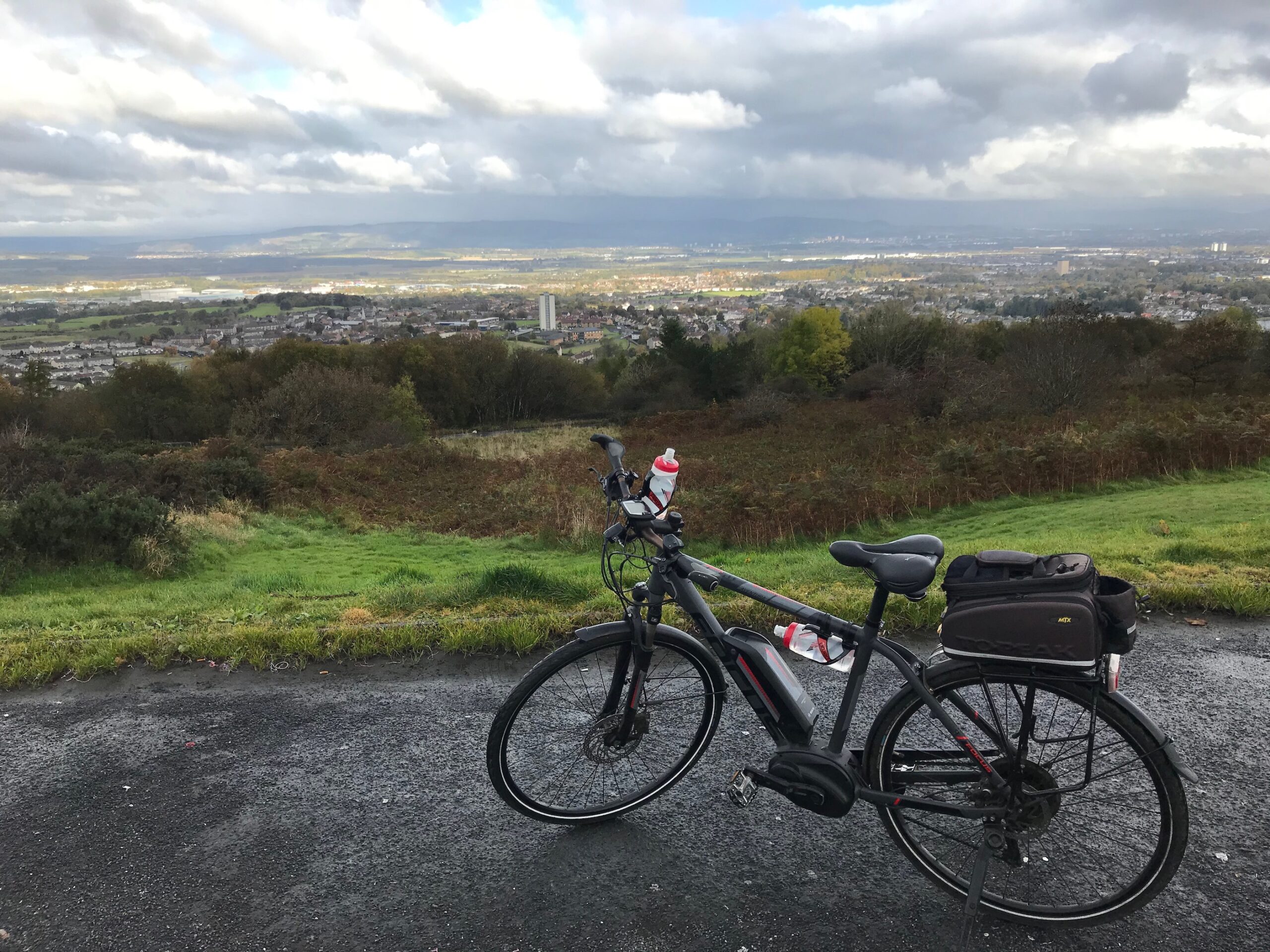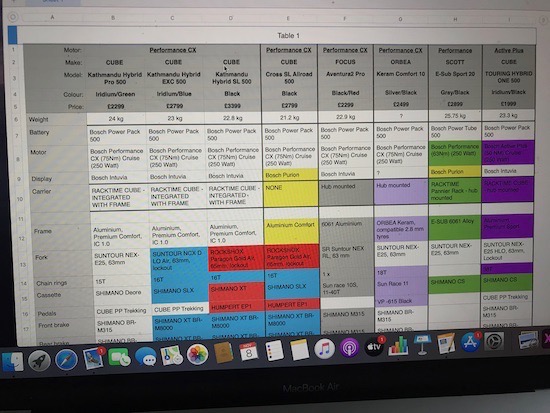Buying My E-Bike
My Purchasing Process
I have outlined below the rough step by step approach I took to buying my e-bike.
This was, of course, specific to my requirements. Everyone will have their own requirements and thus will need to tailor the selections to suit them.
For example, someone who is going to cycle short distances over mainly flat terrain with only a few hills, would not need a powerful motor or battery.
Whereas if you are going to cycle longer distances with several hilly sections you probably would be better with a more powerful motor and a larger battery capacity.
There are many sites online that provide detailed technical explanations about electric bike motors and batteries. For example, Which? has detailed articles on e-bikes. They can be accessed here.
I have outlined the various components of the electrical system on my e-bike in the page Anatomy of My E-Bike. (Click here to go to this page.)
The electrical system in buying my e-bike
- To help with buying my e-bike I went online to learn about e-bikes & to review the different e-bikes available.
- I also visited several bike shops with e-bikes on display.
- I started to learn about the different electrical systems on e-bikes, i.e. electric motor, battery and display unit.
- At that time the three most common electrical systems were Bosch, Shimano & Yamaha, although several others were also available.
- I decided that I would narrow down my search to those e-bikes with a Bosch electrical system as it was the most highly rated.
- Reviewed the Bosch components available. Selected the Performance Line CX motor, the Power Pack 500 battery and the Intuvia display unit. So narrowed my search down further to those e-bikes with that combination.
- I selected this combination because it suited my cycling pattern. This consists of several day trips of 30 – 40 miles each month. I also do some week long tours each year of 200 – 250 miles. Most of my cycling is on mixed terrain including some very hilly sections.
The saddlebag/pannier rack issue in buying my e-bike

The issue of a rear rack to hold a saddlebag and panniers is mainly an issue for me. From what I’ve seen, there are only a few folk who use a saddlebag on day trips together with panniers on longer tours.
I don’t like cycling with a backpack. For this reason I use a saddlebag to keep things like a puncture repair kit, spare tube, multi tool, waterproof items, security chain, etc., etc. I also put layers of clothing in it if it starts to get warmer during the course of a day. Also, in these Covid times, I put sandwiches, choc bars and juice in my saddlebag
To hold the saddlebag you of course need a rear rack. I had used a saddlebag for many years that attached to the rack by means of velcro fasteners. This was fiddly and time consuming. I therefore invested in a Topeak rack and saddlebag. Using this system the saddlebag easily slides along the rack and clicks firmly into place. The rack also has bars for panniers so I also bought a set of panniers that click easily and firmly into place.
I really liked this setup and wanted to transfer it to any new e-bike I was going to buy. This, however, caused a problem with many e-bikes as they had the rack built into the frame of the bike so it wasn’t possible to fit the Topeak rack to them.
So this further narrowed my choice of e-bikes.
The spreadsheet
I went onto the manufacturers websites or to the websites of the shops selling the e-bikes I had looked at. For each e-bike there was a very long list of technical specifications for every part of the bike.
I found it difficult to compare them all so I decided to prepare a spreadsheet so that I could see all the data side by side.

I listed the brand and model of each e-bike along the top of the spreadsheet. Then I listed all the technical specifications down the side. (I ended up with 28 different specifications).
If the data for each bike was the same I left the box white and if it changed I colour coded it.
Although there was such a long list of specifications, a lot of them were over my head and/or not crucial to my decision making.
I therefore focussed on the key issues as outlined above – Battery, Motor, Display and Carrier (i.e. saddlebag/pannier rack).
I looked along the spreadsheet and I could see that all the bikes had a Bosch Power Pack 500 battery.
However, the last two bikes didn’t have a Performance Line CX Motor so they were discounted.
I discounted the fourth bike as it had a Bosch Purion display rather than a Bosch Intuvia display.
The first three Cube bikes all had the Carrier/ Rack integrated into the frame of the bike. This meant that I wouldn’t be able to get my Topeak rack fitted onto the bike. So they too were discounted.
This left the German manufactured Focus bike or the Spanish manufactured Orbea bike, both of which had hub mounted removable racks meaning that the original racks could be removed and replaced with my Topeak rack.
The final decision in buying my e-bike
I eventually opted for the Focus e-bike mainly because German manufactured bikes get a very good name.
I also liked the specifications of the component parts of the Focus. In particular I was keen on the puncture resistant tyres by Schwalbe. This is a make favoured by many cycle tourists and which are highly regarded.
Also, the supplier of the Focus was a local bike shop that said they would happily swap over the racks for me.
I placed the order for my new e-bike in March 2018 and took delivery of it in May 2018.
